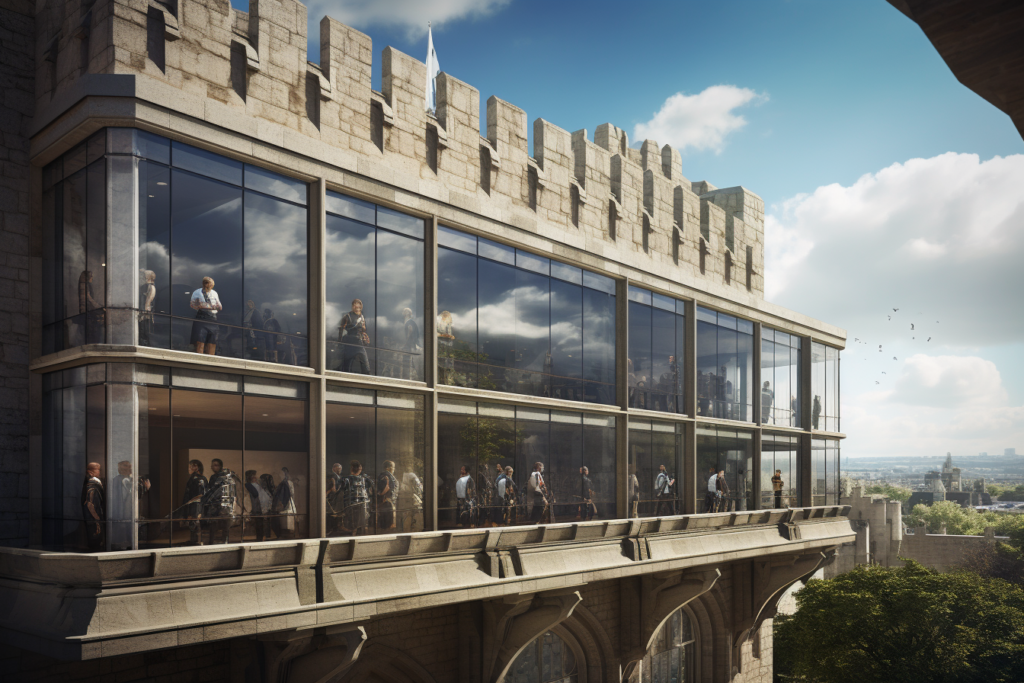Why box-style architecture is bad…
For my final post this month, I’ll return to more traditional and much loved past-time of mine, that is, criticism of bad architecture.
We’ve got a problem around here. Our buildings are boxes. Or so many an architect (including me) would say. And its not necessarily localized to “here” per se – it’s a factor of the built environment. Ever since the modern era where we’ve been able to create thin steel structures of glass and efficient thin walls, building has lent itself to creating boxes. Some architects early on in this advent of new building materials and technology played with these new tools and tried to understand how they could be distilled into their base forms and still create a unique architecture (think Crown Hall by Mies Van Der Rohe), yet somehow the collective “we” still found the need to hold on to some idea of color and pattern and rhythm and decoration, and so we started… continued… to apply stuff to our buildings to make them more visually appealing. But they are still boxes. You’re welcome for distilling a century of architectural history into a couple sentences.

So what’s the problem? I don’t want to think of architecture as boxes. Boxes are stand-alone, non-contextual answers to built environment challenges, and good architecture looks beyond the walls to address the site and context, or better yet, seamlessly integrates place and space. Boxes lend themselves to applied decoration, not assembly-based innovation. And I think we all deserve good (or great) architecture, don’t you?
As I alluded too, my biggest concern is that boxes lend themselves to being dressed with a style. This is actually my disagreement with “stylized” approaches to design generally. I count it a loss if I can’t talk a client out of requesting a “style” and instead extract from them some elements of what that “style” means or symbolizes to them – and then go about addressing those goals and that vision in a manner more in line with today’s technology, construction methods, materials, and economy, all in an effort to make their design solution uniquely theirs. Why do you want crenelations on your office building, are you going to shoot at invaders with your crossbow?

Style only works when it is rooted in the craft that brought about the style. Making something “look” Richardsonian Romanesque is a lot different than actually employing the methods and materials of construction that were employed when that style was created and popularized. But style as a look and only a look is simply devoid of truth. It’s a cop out, a lazy response to not wanting to find a unique client-centered response to a design problem. Again, Danish starchitect Bjarke Ingalls said it best when he stated that “style is a straight-jacket.” As it is too often employed, in dressing up a lot of “boxes”, style limits design possibilities and perpetuates the box.

So let’s think beyond the box. Sure, there’ll be facilities that need the most efficient four-wall solution in the fastest amount of time, and a box might be the best answer, but let’s not let that perpetuate it being the only answer. The box creates distinct boundaries that breed division, a mentality of “what’s inside stays inside and what happens outside is outside”, rather than a sense of community and connection. It runs the risk of moving from the notion that our buildings are boxes to a legitimate acceptance of the question: ARE buildings OUR boxes, allowing us to perpetuate the societal division that “technology” has promised to solve only to become part of the problem and not the solution?… but I digress. Don’t do boxes. Also, avoid circular buildings too, especially when they are circular boxes – that’s a freebie I picked up in grad school. Again, you’re welcome. Talk to you again next year.

Chase Kramer, AIA, is the Director of Design for TSP Inc. in Sioux Falls. He received his M.Arch from ISU where he focused on urban design and sustainability. Before that, he received a degree in Art from Augustana University. He lives in Sioux Falls with his wife and four children. Beyond Architecture, he is an AI early adopter, musician, art lover, and fan of cheese and beer.


